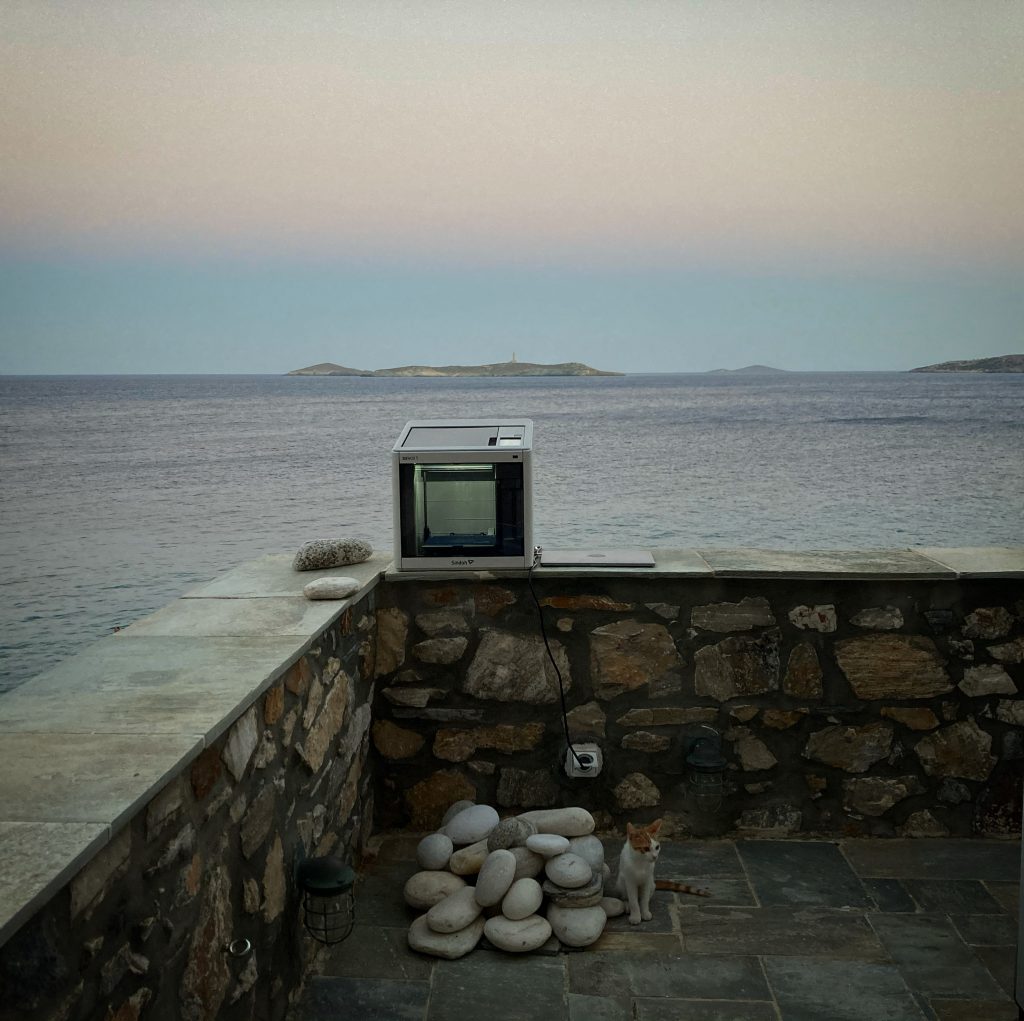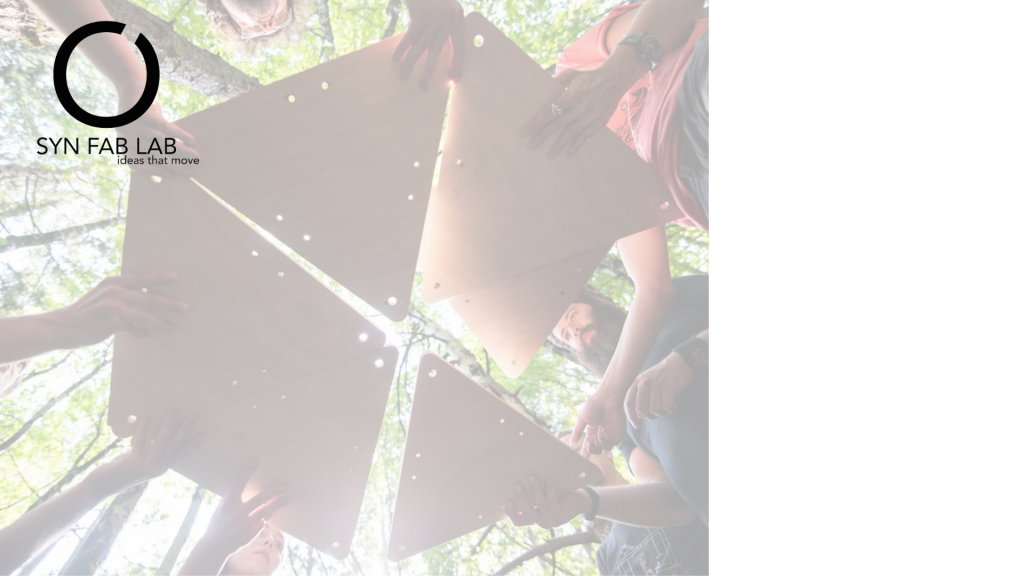Can you briefly describe your organization? Is your organization addressed to makers, do you host makers activities?
Olivia Kotsifa: SYN FabLab, Syn meaning together in Greek, is the first mobile Fab Lab in Greece and part of the global FabLab Network (2000+ Labs). It combines design with digital fabrication, electronics and programming to create hands-on projects aimed at social innovation. Its purpose is to bring people together, to train them in these technologies and ways of thinking and to co-create projects about the place where it is located. The educational and practical part of the Lab refers to the 17 sustainable development goals, 21st century skills and computational thinking.
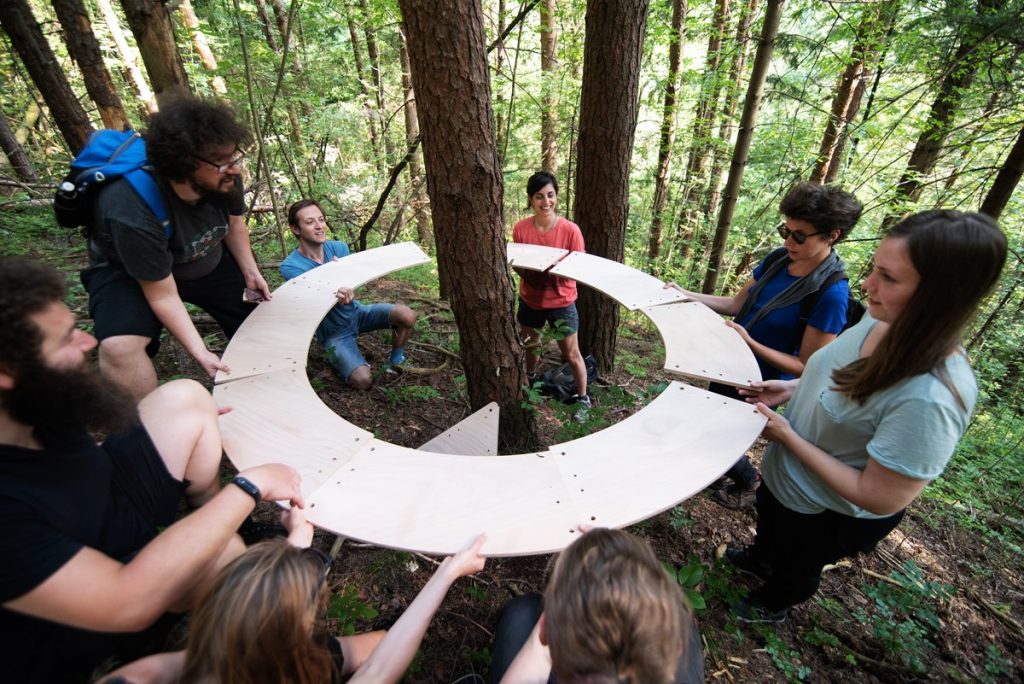
Have you participated in any mobility programs for makers in the past? Can you elaborate on your experience(s)?
Olivia Kotsifa: I was actually involved as an organiser of a mobility programme. In 2010, when I was already part of the FabLab Network, I was teaching at the university then and together with five lecturers, we used to organise this educational trip for art and design students. So, those that were interested applied for this programme and we would travel in a van from Wales to a remote island in Scotland. We would also bring with us the FabLab’s equipment so we would be able to co-develop projects with the local community. We did this in collaboration with Alan Dix, who is a well-known computer interaction professor in the UK.
I had also taken the initiative to create smaller mobility projects of my own. For four years, I was a digital nomad and I wanted to test in practice if the principles of FabLabs and makerspaces actually applied, in the sense that they were open for everyone to visit and develop projects with them. So, during these years I visited a lot of FabLabs around the world in order to collaborate with them and develop new projects. In some cases, things went as planned, while in others not so much. As far as the duration of stay, a really big project that we did in Latin America lasted for almost four months, whereas smaller projects usually lasted around three weeks.
I have not participated in a mobility funding scheme apart from the first round of MAX, which was digital. Such a project, didn’t exist back then and there weren’t many mobility opportunities for makers. There was i-portunus, and various calls for artistic residencies, which unfortunately didn’t address makers specifically. Since there wasn’t a programme specifically for makers’ mobility, I decided to do it on my own!
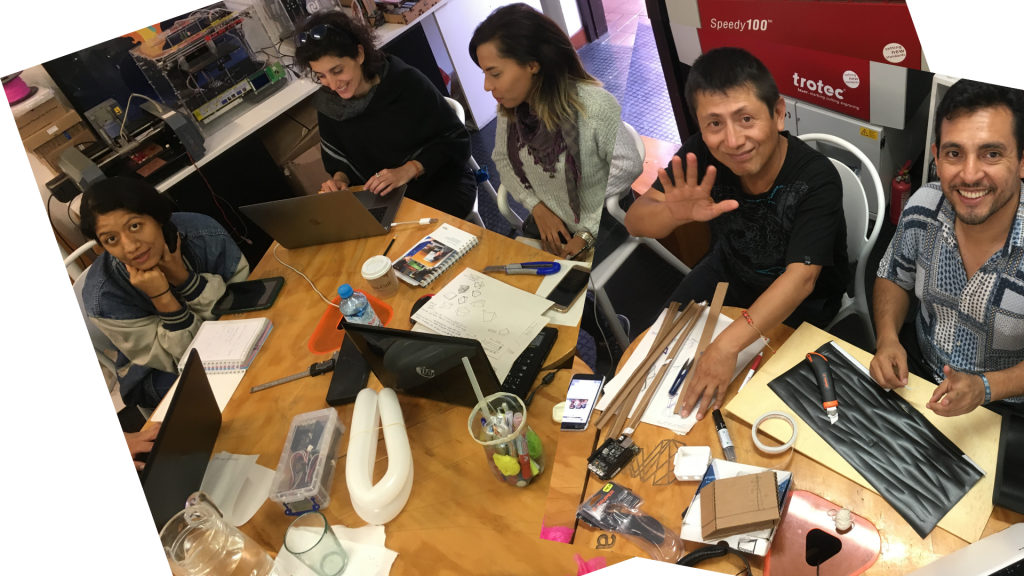
What was the experience like when visiting all these different spaces, where most of them really open towards the public or not?
Olivia Kotsifa: So, when a maker travels, FabLabs are a good starting point because of the website, fablabs.io, where anyone can see the location, the tools, the machines and contact information for any registered FabLab. For this reason, when I was travelling, I mostly looked into visiting FabLabs and not so much makerspaces and hackerspaces.
From my experience there are these three categories of FabLabs, there are FabLabs hosted inside a university, others are private or are part of companies and others are community based or public. Depending on their policy they can be open, semi open or closed to the public. There is always a form of solidarity and a common interest between makers, so it’s really uncommon for somebody to be rejected.
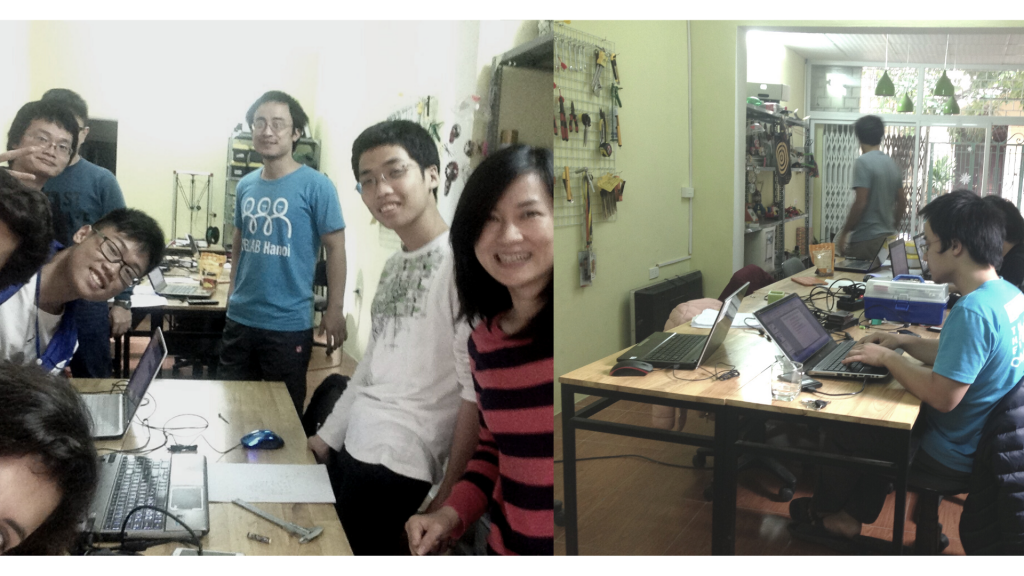
From your experience, what would be the challenges in mobility for makers?
Olivia Kotsifa: A common issue that makers might face when travelling is the fact that they cannot bring all of their equipment and tools with them wherever they go. If a maker visits a place where there are no machines, no tools or a lack of materials, this is actually a challenge. On the other hand, the maker travelling can take advantage of that and come up with new creative ideas in order to develop a project and propose solutions with the tools and resources that they can find at this place.
However, I think that the biggest challenge that makers might face has to do with the local community. You really need to be open to blend in with the community in order to relate with them and collaborate efficiently, proposing solutions that address actual needs or to get to know their culture and way of working, to achieve good outcomes.
Is it easy for a maker to adjust at a new workspace that they have recently visited or not?
Olivia Kotsifa: I would say yes. In fact, makers usually work with almost the same tools for this exact reason, so that they can travel from one place to another, exchange ideas and projects. The makerspace, hackerspace or FabLab that you visit will seem really familiar so, the only issue that you might face is mainly around the familiarity of the CAM software you are comfortable using, compared with what your host is using.
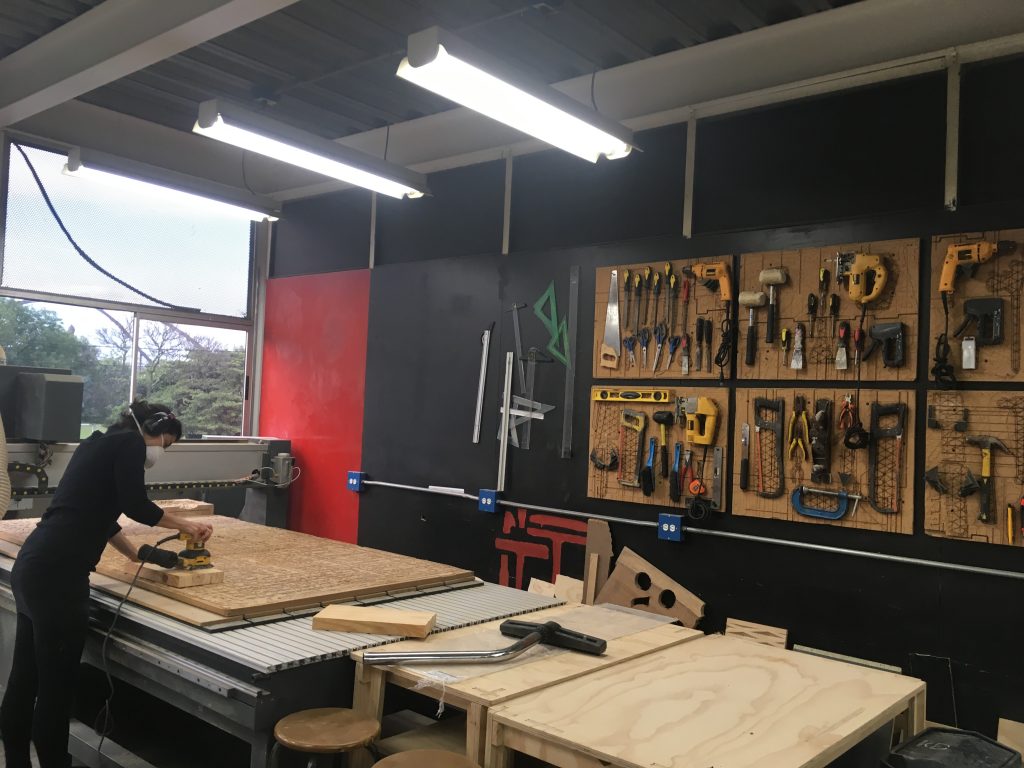
From your experience, would you like to add any good practices related to makers’ mobility?
Olivia Kotsifa: The principle of co-design is a good practice that comes to mind. For example, there was this project that developed some years ago, it was an interactive snow park in the French Alps, in collaboration with a colleague Alexandros Kontogeorgakopoulos, also Senior lecturer and Fab Lab academic in Cardiff Metropolitan University. In order to realize this project, we needed to get to know better those who managed the snow park, those who were maintaining it and building the modules out of snow, those who were actually using it. We wanted to get to know them, learn more about their culture, such as the kind of music that they listened to or what did they enjoy doing in their free time. This way the project was truly interactive, since we came so close to the community that would actually use the snow park. We designed and built the whole thing together, this way they enjoyed the project too and the whole process resulted in something that was actually meaningful. The final project was professional snowboarders performing snowboarding moves in a custom-made snowpack. Motion capture was used to trigger sounds and light with snowboarders’ movement in snowboarding modules.
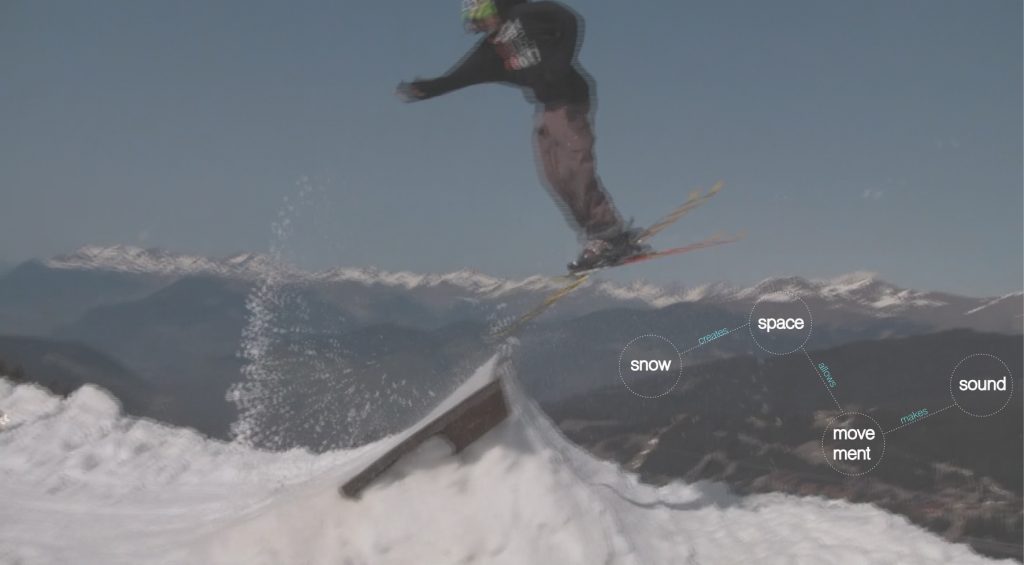
Was there somebody responsible for designing the whole process or the interaction with the community or did it just happen naturally?
Olivia Kotsifa: The interaction with the community started a few months before our arrival in France. While in France there were a lot of discussions as well as tests and together with the rest of the team we designed the interaction, based on how would a professional snowboarder move through the snow park. The original idea was for us to know where we would use a projection for example, or where the music or even the lights would change. This worked for the best actually thanks to the community’s input. They proposed some really interesting features and changes that were truly representative of their culture.
How do mobility experiences bring value to your organization and community?
Olivia Kotsifa: Each one of us carries their own experiences and knowledge with them. This creates numerous possibilities of interaction when we meet one another. These experiences are something really nice to share with the people that you meet for the first time, so you always contribute to the process, even if you don’t actually craft something, such as a final piece of work. This is what the local community could gain from you. On the other hand, what the maker could get is a different perspective. While visiting this community, you become part of their daily life. You learn a lot about how they work, how they are using their tools or some traditional crafting methods that may even exist in your own country too. For example, during was a project that I did in Tsepelovo, a small village in Greece, I learned how to work with stone to make dry stone walls contributing to a larger co-created project I did with young people of the village. This was actually one of the hardest projects that I have done, but in return I learned so much from it and I think I also contributed to the community by showing them some of the technology that I work with.

Is mobility a chance for better connecting with the local community?
Olivia Kotsifa: Mobility helps a lot with meeting new people. There is a huge difference staying in one place for two days, compared to two months. The level of engagement with the local community always depends on the project that you are doing and the research that you have conducted. It would be a nice idea to have some online platforms to connect and meet the community before actually visiting them. This way they could also propose some people that you collaborate with, some reading suggestions for your research and so on. This way, you can also be better prepared for what you are going to do because usually the time spent in one place is very limited. So, yes, it is a good chance for better connecting with the local community, if the time of interaction is sufficient.
From your experience, what would be the ideal duration for a mobility scheme for makers?
Most of the times you have already decided on the project before visiting the place that you are going to implement it in. In some cases, this might not be ideal, since you haven’t engaged or been part of the local community. In other words, you suggest a solution to a problem that you think exists based entirely on your own perspective. Unfortunately, this might not be the case always.
So, the ideal duration would be around two weeks only if you consider the solution, you propose open for further development. Take for example my visit in Tsepelovo. I went there as an artist in residency for an EU project. While preparing for the residency I had settled on a project and I had packed the tools that I would need for that specific project. Upon my arrival I realized that the kids at Tsepelovo didn’t actually know each other really well, since they were visiting the village only for a few days in summer. I realized that this was way bigger than the original project that I had initially thought of and I decided to do an activity with them in order to connect them. I only had two weeks to organize the project from the beginning and it came out really nice.
What would be a dream mobility scheme for makers? Would you give priority to travel support, social encounters, technical access or network building?
Olivia Kotsifa: I am actually trying to develop a mobility project right now so this is a question that I have in mind. I think that the ideal mobility scheme addresses makers and designers of any age from abroad and helps them to meet and engage with locals. So, the programme that I’m thinking to launch will include small teams, where both locals and creative people from abroad would work together. Its somehow like a coworking space for digital nomads, only for this case the digital nomads are makers that have access to their tools and engage with the local community.
Also, something really nice for this scheme would be some kind of funding for tools, project development or for a presentation. It would also be interesting if the participants brought with them some tools that they already use back home contributing to a broader exchange of available knowledge. These materials and tools from abroad will be used with local materials, tools and methods, somehow connecting the global with local community. This way ideas for social innovation are also born. I think that it’s really difficult for people living in remote areas of Greece to travel abroad, mainly for financial reasons. So, bringing them closer with people from other countries is somehow like helping them travel.
What is mobility in times of world pandemics? Should we still invest in that? And, considering our travel restrictions, how can we continue to grow and reinforce
Olivia Kotsifa: I think it’s really important to invest in mobility. However, because of the pandemic, communities become more introvert and makers may be more reserved in travelling abroad, away from their own country’s health system. The pandemic may be a good reason to reconsider mobility or find better ways to do so.
One idea is that mobility can still exist with makers moving within their country. If travel is impossible, local makers could team up with makers from abroad exchanging global knowledge, customised to meet local needs, aesthetics and resources. Network reinforcement is vital in this case.
We could also consider keeping our travel CO2 footprint down by slow travelling and making a positive impact on the way to the final destination. Again, a networking platform would be important in this case.
